What Is Glaucoma?
The eyes are critical visual organs of the human body. People often do not do enough to protect their eyes, leading to various ophthalmic diseases. Glaucoma, a significant ocular condition, occurs when the intraocular pressure (the fluid pressure inside the eye) exceeds the optic nerve's tolerance, causing nerve damage. The usual range of intraocular pressure is 10-21mmHg. Both elevated and normal intraocular pressure result in optic nerve fragility. Glaucoma affects the patient's vision, and if treatment is not started promptly, it can lead to irreversible loss of eyesight. It is the second most leading cause of blindness globally, so preventing glaucoma is vital for eye health.

Factors Leading to Glaucoma
- Have a family history of Glaucoma
- Over 40 years old
- High myopia
- Diabetes
- Farsightedness
- Blood circulation disorders and excessive blood pressure fluctuations
- In addition, exertion, dark environment, prolonged reading, and prolonged prone lying may also increase the chance of seizures.
Glaucoma Early Detection Symptoms
- Acute Glaucoma: Eye swelling, eye pain, rainbow vision (there will be a rainbow-like aperture when looking at lights), migraine, nausea, vomiting, and other symptoms.
- Chronic Glaucoma: The symptoms are not obvious and they are difficult to find by patients in the early stage. There will be symptoms such as vision loss, defects, eye swelling, and headaches in the middle stage. (some patients are completely unaware that they have Glaucoma)
- Congenital Glaucoma: Photophobia, excessive secretion of tears, blepharospasm (eyelid twitching).
Treatment of Glaucoma
Currently, no medical method can cure glaucoma, but it is completely controllable if monitored in time! Doctors choose different treatments depending on the patient's condition. The primary purpose is to control intraocular pressure, including inhibiting the production of eye fluid aqueous humor and promoting its outflow. Medications, lasers, and surgeries are generally used for glaucoma management. It is important to note that although these treatment methods can effectively decrease glaucoma symptoms in some cases, they cannot be used for long due to the progressive nature of optic nerve damage in the eye.
Red Light Therapy Role in Glaucoma
Red light was initially used to relieve myopia (nearsightedness). It was discovered that the degree of myopia tended to decrease after a period of treatment. Initially, the mechanisms by which red light affects the eye were not well understood. With the continuous advancement of advanced eye examination equipment, many experts have discovered that red light positively improves retinal function and restoring vision.
Low-level laser therapy (LLLT) or red light therapy is technically comprised of visible red light and near-infrared light-emitting diodes that energize cellular functions. Red light therapy has been shown to have a tremendous therapeutic or adjuvant treatment potential for various acute and chronic diseases. Emerging studies suggest the utility of red light in preventing and reducing glaucoma symptoms. The potential mechanism of red light application in Glaucoma is the follows:
- Improve Eye Circulation
Studies suggest that red light therapy stimulates nitric oxide (NO) and increases blood flow by vasodilation (blood vessels widening). Improper blood circulation in the eye leads to enhanced intraocular pressure, a primary symptom of Glaucoma. Red light therapy lowers the risk of developing intraocular pressure, optimizes oxygen delivery to eye tissues along with the relaxation of eye muscles, and reduces eye strain.
- Neuroprotection
The major challenge in curing Glaucoma is fixing optic nerve damage. The optic nerve is made of bundles of nerve fibers and transmits visual information from the eye to the brain. Excessive reactive oxygen species (ROS) production continuously threatens optic nerve degeneration. Red light increases the body's capacity to neutralize ROS and reduces cellular oxidative stress. Red light treatment could enhance the structure and function of the optic nerve by protecting vision.

- Restore Aging Mitochondria
As an extension of optic nerves, the retina has the highest concentration of mitochondria in photoreceptor cells. These cells need a huge amount of energy supply, so the vision of glaucoma patients is more susceptible to aging than other organs. An average of 70% reduces the production of adenosine triphosphate (ATP) in retinal cells. Mitochondria have particular sensitivity to deep and long red and near-infrared wavelengths. Red light stimulates the number and function of mitochondria by increasing the energy supply to eye cells. Researchers from the University of London have devised a method to improve vision with red light, which only needs to be irradiated with a specific wavelength of light for 3 minutes in the morning to improve the aging mitochondria eye cones. Studies reported that "seeing red light can reduce vision loss " and "red light can effectively inhibit and repair the damage and aging of retinal mitochondria."
Red Light Therapy Safety Parameters for Protecting Vision
There are many types of red light therapy equipment available in the market. The red light has physical characteristics such as safety, strong penetration, and low energy. The overall effectiveness of red light therapy devices is high, with no obvious adverse reaction. You can ensure safety by following these steps:
- Reasonable choice of red light therapy device
- Eye power and maximum light intensity are criticalindicators to consider when assessing the quality of red light equipment.
- Do not exceed the dosage and application time of the advisable period.
Conclusion
In short, Glaucoma is a serious and irreversible blinding eye disease, which is extremely damaging to visual function, so we should pay attention to it. Today, red light is supported by many experimental results and is a promising, non-invasive, inexpensive, and simple strategy to delay the onset of Glaucoma. Active prevention of glaucoma with
Bestqool red light therapy devices can improve eye health and the quality of life.
References and Citations
[1] Weinnreb RN, Aunng T, Mediros FA. The pathophysiology and treatment of glaucoma review. JAMA. 2014 May 14;311(18):1901-11.
[2] Ahn SH, Suh JS, Lim GH, Kim TJ. Potential affects of Light Irradiance in Glaucoma and PMBT. Bioengineering (Basel). 2023 Feb 7;10(2):223.
[3] Chen H, Wang W, Liao Y, Zhou W, Li Q, Wang J, Tang J, Pei Y, Wang X. Low-intensity red-light therapy in slowing myopic progression and the rebound effect after its cessation in Chinese children: a randomized controlled trial. Graefes Arch Clin Exp Ophthalmol. 2023 Feb;261(2):575-584
[4] Sivapathasuntharam C, Sivaprsad S, Hogg C, Jefery G. Aging retinal function is improved by 670 nm near infrared light is associated with corrected mitochondrial decline. Neurobiol Aging. 2017 Apr;52:66-70.
[5] Rojas JC, Gonzalez-Lima F. Low-level light therapy of the eye and brain. Eye Brain. 2011 Oct 14;3:49-67.



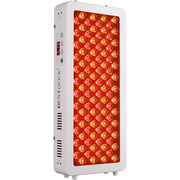








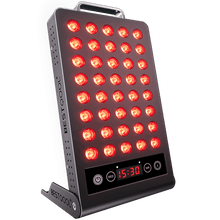
 Small
Small
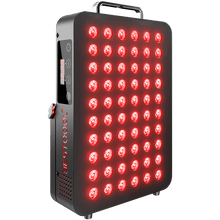
 Moderate
Moderate
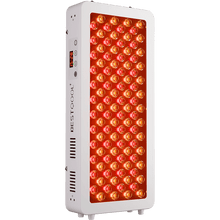
 Moderate
Moderate
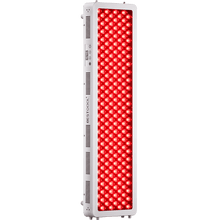
 Moderate
Moderate
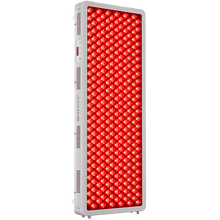
 Full
Full



